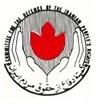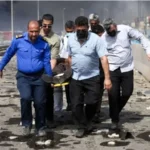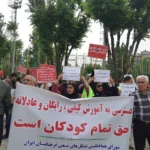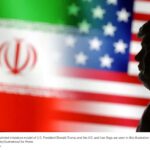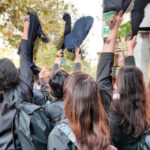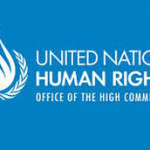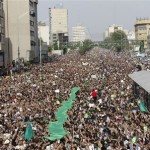
As the negotiations between Iran and the P5+ 1 world powers to revive the Iran nuclear deal progresses Jane Green considers the issues and the prospects for peace in the Middle East
Negotiations to revive the Joint Comprehensive Plan of Action (JCPOA) or Iran nuclear deal, have been ongoing since early December 2021. Vienna has been the venue for these negotiations involving the Islamic Republic of Iran, the United States, Britain, France, Russia, China and the European Union, in an effort to avert a devastating new war in the Middle East.
The process has been complicated by the fact that Iran has opposed the official participation of the US delegation in the negotiations, headed by Joe Biden’s special envoy on Iran, Robert Malley, which makes progress slow, as discussions have to proceed through third parties.
Ned Price, the US state department spokesperson, has warned that, “The runway is very, very short – weeks not months.” This assessment is confirmed by US Secretary of State, Antony Blinken, who has added that any hope of a deal is dependent on getting agreement on reductions in Iran’s nuclear programme. With Iran achieving levels of uranium enrichment at 60%, the US argue that faster progress is needed.
Under the 2015 JCPOA, the Obama administration agreed to remove economic sanctions on Iran in return for the latter’s guarantee that it would keep the enrichment of uranium at lower levels. Iran remained in compliance with the terms of the JCPOA but, a year after the Trump administration unilaterally withdrew from the deal in 2018, reimposing sweeping sanctions on Iran, the Iranian regime began to suspend some of its commitments, including the cap on uranium enrichment.
The regime in Tehran argues that it had no choice but to go down this path, to find ways to generate leverage to revive the deal, especially after other signatories to the agreement failed to counter the effects of the reimposed sanctions or tackle the unilateral withdrawal of the US.
The sanctions have had a crippling impact upon the Iranian economy and the regime is acutely conscious of the growing popular unrest in the country, stemming from the sanctions. This is as a result of factories and industrial complexes folding, unemployment skyrocketing and a rapid severe devaluation in the national currency.
As a consequence, the regime has begun to moderate its demands and preconditions to ensure the current negotiations do not collapse. The Islamic Republic more than anything is concerned about the survival of the theocratic regime rather than worrying about the direction of Iranian social and economic policies.
In spite of negotiations not showing any signs of immediate breakthrough, in Tehran the official statements attempt to show that the negotiations are progressing. The Iranian position appears to be that if the negotiation is threatened, the leadership will change tack and proclaim an “heroic compromise” for the negotiations to go forward. Iran seriously needs the sanctions to be lifted.
However, Iran is attempting to not rely entirely upon the outcomes of the negotiations to address its economic crisis. The Iranian foreign minister, Hossein Amir-Abdollahian, travelled to China recently to secure a 25-year partnership agreement. Ebrahim Raisi, the Iranian president, has travelled to Moscow recently with the same purpose.
Nevertheless, neither China nor Russia can economically or politically protect Iran’s position. Neither can help to save Iran from the economic catastrophe confronting it if the US and UN economic and banking sanctions continue, or if negotiations fail and Iran continues with its uranium enrichment to weapons grade, 95% purity.
Russia has taken a more active role in the current negotiations to represent Iran’s interests. Mikhail Ulyanov, Russia’s envoy at the Vienna talks, stated that the traditional meeting of JCPOA members was held in the presence of the US delegation without the participation of Iran.
“We had a targeted discussion on one of the most difficult issues on the agenda of the Vienna talks,” Ulyanov emphasised.
Iranian Foreign Minister Amir Abdullahian has stated if the Western partners in the negotiations are serious in their intentions, then it would be possible to reach an agreement.
“We want the lifting of sanctions imposed on Iran by Trump, especially those that run counter to the nuclear deal. We want guarantees that include not imposing new sanctions and not returning the current sanctions after they are lifted.”
However,differences remain on how to classify whether a sanction relates to the nuclear deal, and so should be lifted, or is related to other issues, such as Iran’s missile programme or human rights abuses that the US and others say must remain in place.
The Iranians are also concerned that any deal will not be subject to the vagaries of any change in US administration. Tehran wants binding commitments that if the US quits the deal, the EU will do more to defy secondary US sanctions by injecting real cash into the abortive trading mechanism, Instex, set up by the EU to bypass US sanctions.
The outcome of the negotiations is further complicated by the position of Israel where the Israeli prime minister, Naftali Bennett, has warned that his country will not be bound by any agreement. This underlines once again the precarious balance in the Middle East and the danger that, even if agreement is reached in Vienna, the hardline mavericks in Israel may still plunge the region into conflict.
Iran’s economy has been designed to grow via integration with global capital. It is highly dependent on the value of the dollar. Therefore, the regime is highly unlikely to be able to manage the economic crisis while it remains under financial sanctions.
In addition, it must be noted that even trade between China and Iran is heavily impacted by the US banking sanctions, especially with regard to the use of transaction mechanisms such as SWIFT, from which Iran is currently excluded.
Internationally the Islamic Republic is isolated, with even the support of Russia and China not being sufficient to make a significant difference to the political or economic situation. The regime is conducting talks with other the regional powers, even looking to improve relations with Saudi Arabia.
For the US Biden’s policy is in essence the same as Trump with a softer cover. It aims to tame Iran to play a “constructive” part in the Middle East, as the US aims to give its full attention to China and the challenges it faces there. In short, US favours a multilateral confinement approach, as introduced by Obama, with the difference that Biden is protective of Israel and Saudi Arabia. The ideal scenario from a US point of view is that the balance of power between the four big Middle Eastern powers, Iran, Saudi Arabia, Turkey and Egypt, will keep US interests protected.
Domestically, the Islamic Republic has lost much of its social base of support. Political Islam as an ideology is discredited and associated with corruption. Disastrous economic policies have driven of millions of people into poverty. Social and cultural conservatism has alienated youth, women, and intellectuals.
The ongoing actions against trade unionists and the political opposition, a feature of the Islamic regime for over 40 years, are leading to increasing resistance and protests, as the corrupt practices and economic incompetence of the clergy become more evident. More than 60% of Iranians live below the poverty line, there is no economic growth and inflation continues to climb.
While the regime makes a show of resistance to US demands in Vienna all indications suggest that the theocratic regime is running out of options. An agreement behind closed doors with the United States may be all that is left. This is certainly an option that can firmly tie Iran to the global capitalist system.
It may not be the outcome that the US or the Islamic Republic will admit to publicly, but it may yet be a solution both are prepared to live with in the short term.

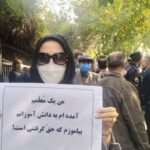
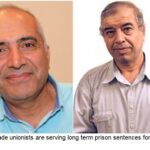
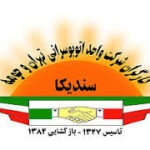


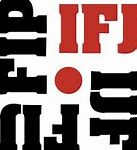



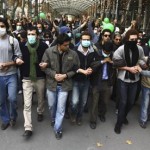
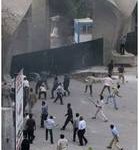
 Posted in
Posted in 